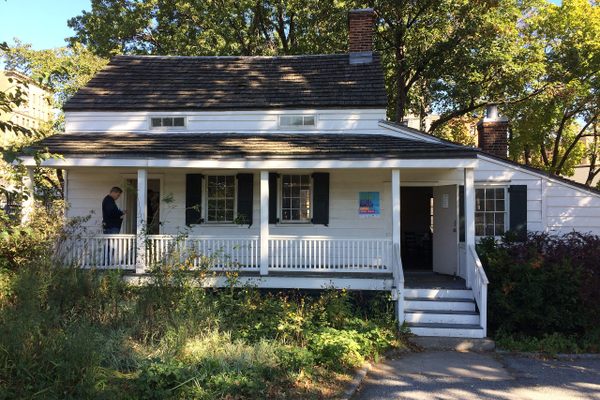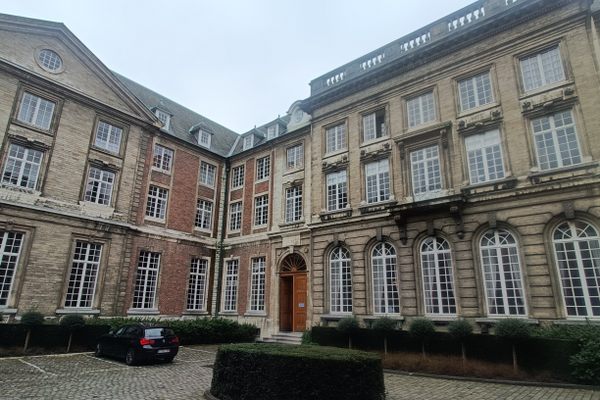William Spain Seismic Observatory
An unassuming stone building houses New York City's oldest seismic station almost 30 feet below the Bronx.
Fordham University’s Rose Hill campus is home to the oldest seismic station in New York City, and one of the oldest in the United States. Installed in the basement of the university’s main administrative building in 1910, it continues to chart seismic activity from all over the world to this day.
The station is maintained by Fordham’s physics department, where data is transmitted to the adjacent academic building, Freeman Hall. While mainly used by the physics department, that data is available to students across several disciplines, notably environmental science.
Originally, data was gathered using a Wiechert seismograph, a precarious pendulum-dependent machine that graphed vibrations using a system of levers, kerosene-smoked paper, a weight, and a rod. It was so sensitive that in order to avoid skewing data, a horse was kept on campus to maintain the grass outside of the station instead of usual lawn-mowers.
Of course, this seismograph has since been replaced by computerized broadband seismometers, which lie in a vault nearly 30 feet below the ground, picking up trembling of the Earth’s tectonic plates and even of trains heading to Grand Central from the nearby Metro-North Fordham stop.
About a decade after that first basement seismograph, Fordham constructed a new seismic station using money donated by William Spain, who then named it after his son, William, a physics student of the university who died some years before. While the actual seismograph is subterranean, it is inside a small stone cottage flanked by trees and wildflowers with a stone path leading to the entrance. There is a bronze plaque of St. Emidio on the observatory’s side, the patron saint of protection against earthquakes.
Today, the William Spain Seismic Observatory, using a strong motion detector, partners with a U.S. government program to assess earthquake risk in metropolitan areas. This particular data is also streamed to a government data repository in Boulder, Colorado. Fordham is also a member of the regional Lamont Cooperative Seismic Network, which allows the 21 other seismic-observatory members across the eastern U.S. to share data and equipment like geophones and seismometers for further research projects.
Know Before You Go
The William Spain Seismic Observatory is located east of the Freeman Hall academic building, next to the campus' central lawn, Edward's Parade (or "Eddie's"). The inside is unavailable for public visits. The Fordham Rose Hill Campus is walkable from the D and 4 train subway stops at Fordham Road. It is also adjacent to the Metro-North Fordham Station. The university's main entrance is located across the street from New York Botanical Gardens on Southern Boulevard.
















Follow us on Twitter to get the latest on the world's hidden wonders.
Like us on Facebook to get the latest on the world's hidden wonders.
Follow us on Twitter Like us on Facebook